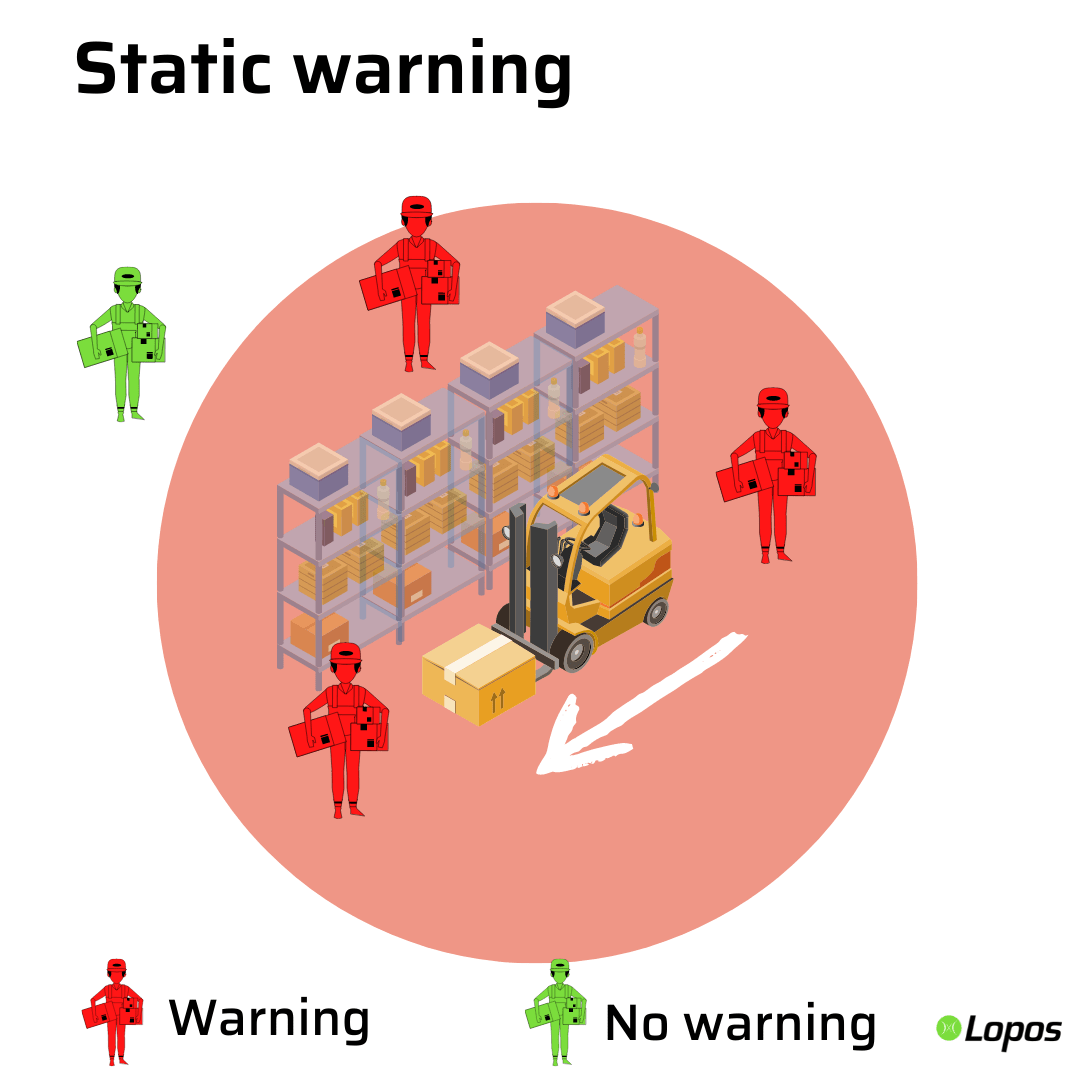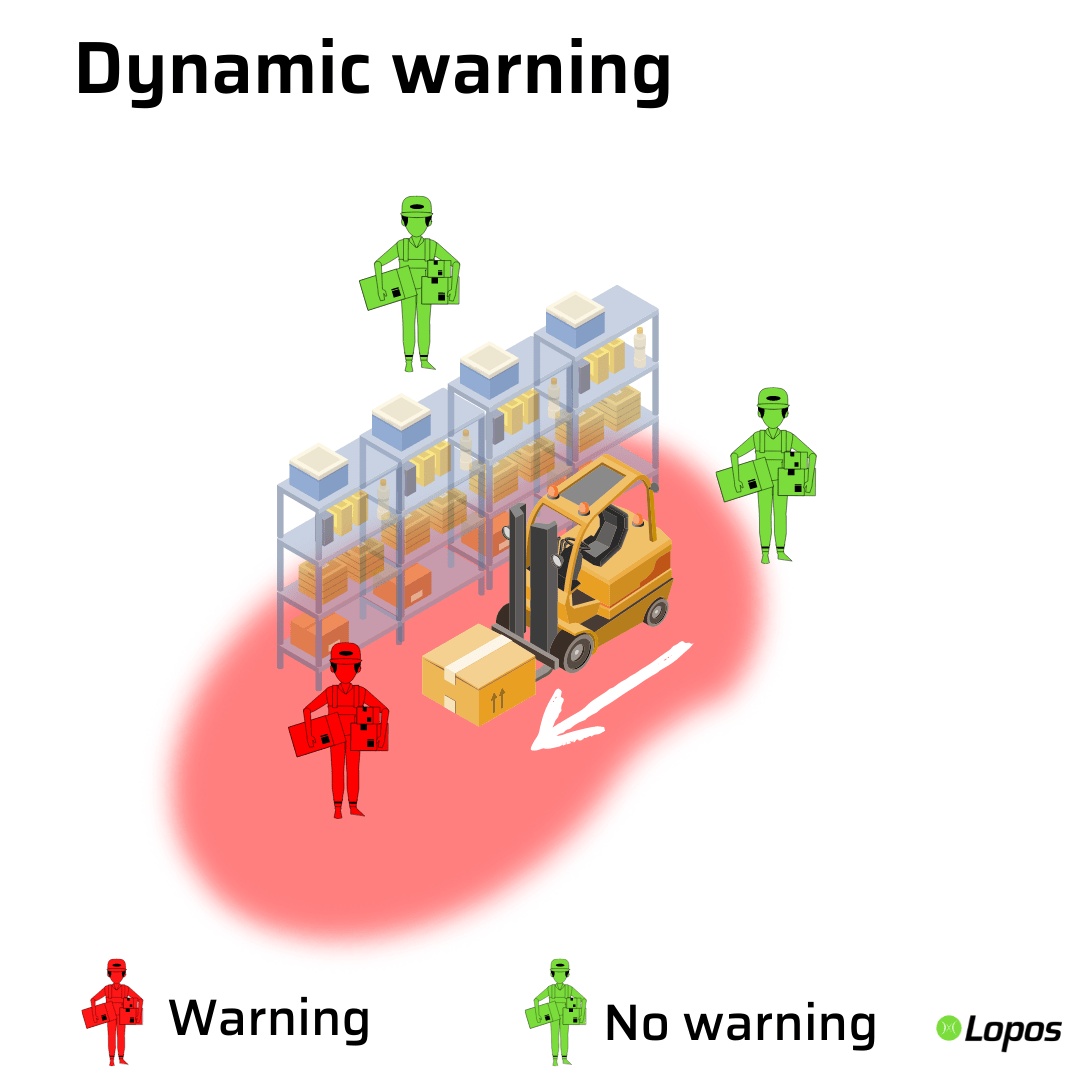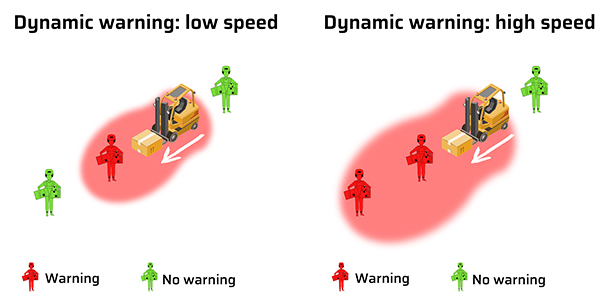DYNAMIC WARNING
The importance of user adoption when implementing safety solutions
Published on March 15, 2022
Published on March 15, 2022
Written by Bart Jooris, CTO at Lopos
Health and safety professions are constantly on the lookout for new solutions to prevent incidents inside and outside of the warehouse and manufacturing plant. Especially since traditional methods such as training and safety education prove to be insufficient.
More particularly on forklift safety, they come across systems like cages, camera’s, lighting, RFID systems, sensors, and more. Trials are implemented to verify if the technology is right for the purpose, fits the needs and gets adopted by the staff involved. The latter is crucial as employees are the ones who’ll use it once a decision has been made.
Trials of our LoposAlert solution – our collision warning system with a 360° range using radio technology (UWB) – with customers across different sectors have indeed pointed out that adoption by staff is critical when putting in place a safety system. Staff typically want to understand why any solution is important for them and how it can help them and their peers to be more safe.
From our experience, the key points to focus on to maximize user adoption among your employees are the following:
Irrelevant warnings do have a negative impact on the staff adoption as they may lead to ignoring relevant information as well. At Lopos, we believe adoption of our solution by staff is critical, which is why we developed dynamic warnings to tackle the issue of unnecessary alarms. With this feature we are able to minimize false warnings resulting in an environment where employees are happy to have the LoposAlert solution.
Dynamic warning means that the warning range of the (forklift) beacon expands in the direction that the operator drives. Moreover, the greater the speed of the vehicle, the further the warning range extends. By doing so LoposAlert also takes the braking distance into account, resulting in more time for the operator to react. As such any staff that are outside the warning range will not get alarms and comprehensive system configurations are no longer required.

The balance between having a warning area that is big enough to account for braking distance at high speeds and avoiding false alerts as much as possible is challenging.
A fixed warning distance would mean that there’s a circular warning area around the vehicle. The warning distance would be the same when standing still or moving. This would cause a lot of false positives when the device is standing still or moving slowly.
Depending on the layout of the warehouse a circular warning area with a big radius could also trigger false positives in neighbouring racks, as you can see in the image.
 That’s why we developed dynamic warnings. Thanks to our blindingly fast range measurements – up to 500 measurements per second – one beacon can track all close by beacons and wearables up to 30m or 100ft in real time and derive precise braking distances per device.
That’s why we developed dynamic warnings. Thanks to our blindingly fast range measurements – up to 500 measurements per second – one beacon can track all close by beacons and wearables up to 30m or 100ft in real time and derive precise braking distances per device.
Our dynamic ranging starts from a small circular warning area when the vehicle is stationary. When the vehicle is moving, the warning range will be transformed dynamically to include the changing braking distance. The warning range only increases in the direction the vehicle is driving. The greater the speed of the forklift, the greater the warning range, minimizing false warnings while accounting for sufficient braking distance.

Implementing high-speed ultra-wideband (UWB) ranging on our small and lightweight (33g or 1,2 oz) wearables and having a one-week battery life requires extreme efficiency at the hardware and firmware levels. This in combination with the configurability of our devices makes our solution unique.
Hard work, a great team, our patented communication stack, and 8 years of experience have made this amazing feature possible.
PS: At Lopos we call our dynamic warning shape the “potato shape”, if you’re reading this and you can think of a better name, let us know :).